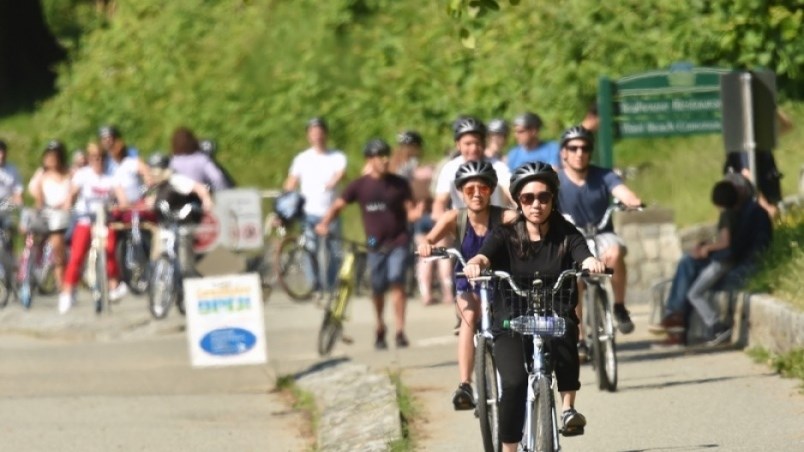The Editor:
Re. “Letter: It irks me Coquitlam doesn't cancel non-essential projects in time of financial struggle” (The Tri-City News, May 9)
I’m disappointed with the letter submitted on May 9 regarding overspending on infrastructure. I have numerous issues with the letter writer’s take that the King Albert Greenway specifically should be cancelled.
First of all, although the King Albert Greenway purportedly costs $3 million, the Coquitlam 2018-2023 financial plan shows (page 102) that the city is expected to spend $25 million on roads this year to rehabilitate, expand and manage the system. The $3 million pales in comparison, especially when one considers the limited maintenance that will be required of the King Albert Greenway — for example, anecdotally, how many times have you seen a pothole on the multi-use paths compared to a roadway? Although it may have a seemingly high initial cost, its maintenance costs will be significantly lower than a roadway. Surely pedestrians and cyclists can ask for a measly $3 million?
Many decry cycling projects as a “waste of money” because there isn’t a large uptick in cycling numbers after a cycling project is completed. I liken this to the example of hoarders who throw out one piece of trash and then give up on cleaning altogether. Just like drivers need a network of roadways to get around efficiently, so do cyclists. One isolated project is unlikely to do much on its own, but it’s part of a broader build-out of a cycling network that will allow cyclists of all ages and abilities to move efficiently and safely. The King Albert Greenway, importantly, connects to the Hillcrest/Como Lake Greenway and the Poirier Greenway, linking them together in a network.
This is also the perfect time to build cycling and pedestrian infrastructure. I’m sure all have seen more cyclists on the roads in the last month, and more pedestrians outside enjoying their local neighbourhood. It’s also worth mentioning that it violates city bylaws for cyclists to simply ride on the sidewalks, and many are uncomfortable riding in mixed traffic with vehicles travelling at 50 kilometres per hour and often faster as many choose to speed. Wouldn’t it, therefore, be the perfect time to build infrastructure that promotes such healthy and green active transportation options?
Missing in the equation is the other factors that move this beyond a simple “bike lane” or “sidewalk.” The project will also create safer crossings for pedestrians and offer better lighting to ensure safety, which is especially important for the vulnerable in our community. The pedestrian and cyclist bridge over Como Creek as part of the King Albert Greenway will also be used as an opportunity to fix some environmental and stormwater management issues. Again, not just “a sidewalk” or “a bike lane.”
Lastly, there is a major income aspect to building cycling infrastructure. News recently circulated that two million Canadians became unemployed last month. In addition, many have had their hours reduced and college graduates are unable to find work after completing their studies and graduating into the worst job market in decades. For such groups, finances are tight, and purchasing a vehicle and paying for insurance and gas may not be the best use of scarce funds.
Young drivers specifically must pay $4,000 to $5,000 per year for insurance, even with a completely clean record and an older, less expensive vehicle. Older cyclists, such as my grandparents in their late seventies and early eighties, are able to ride 25 kilometres on a standard bike, showing that cycling truly is an “all ages” activity.
Cycling and walking provide a much more affordable transportation option, albeit one powered by one’s own body rather than simply pressing down on the gas.
In my opinion, the letter writer should consider the larger picture rather than honing in on one specific project, which only leads me to presume that she is a driver and seldom ever a cyclist or pedestrian.
Colin Fowler, Coquitlam



